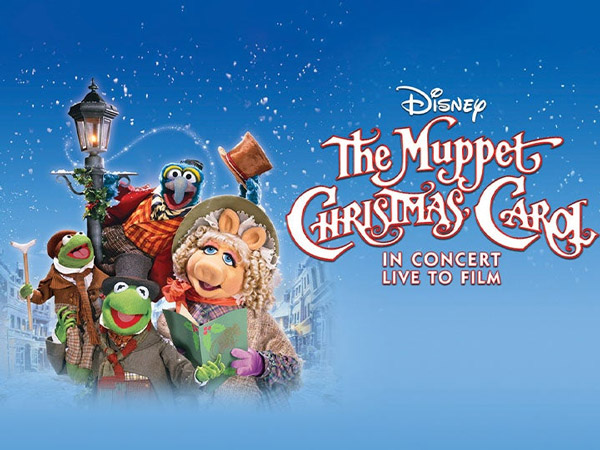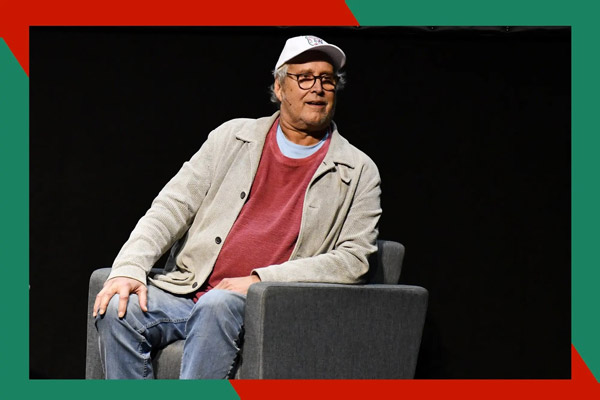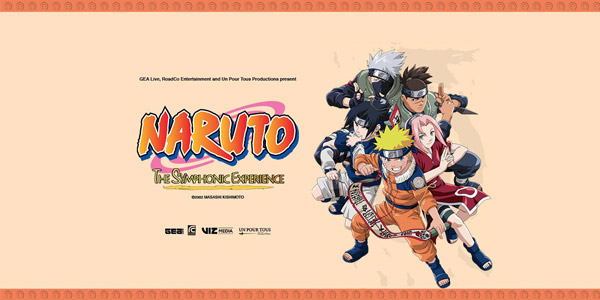The real star of course is Carpenter himself, both as director and soundtrack composer. In the latter capacity he recorded the score in just three days, basing it on simple syncopated rhythms taught to him as a child by his father, a music professor. It’s a perfect score, flawlessly employed in the film. The main theme has become iconic, as recognizable as those of Jaws and Star Wars. What Carpenter also cleverly does, and a highly original idea at the time, was to incorporate the music as a sound effect. Every time we see Myers jump out from the darkness we get a stabbing sound, which varies in tone for each situation. Like his earlier score for Assault on Precinct 13, it was entirely composed on a synthesizer, a method which would become the norm for low budget films over the next decade.
Carpenter’s direction is flawless, remarkable given the pressures of time and budget imposed on the young film-maker. To give it a higher production value, he took the decision to shoot the film in Panavision, a widescreen format usually reserved for epics and blockbusters. Carpenter uses the wide frame to create numbing tension, Myers often appearing out of the empty space at the corner of the screen. The Panaglide, an early form of Steadicam, was employed as a way of filming movement quickly without having to lay down tracks. It often serves as Myer’s POV, as in the brilliant opening sequence seen through the eyes of the eight year old killer as he murders his sister. Later in the film Carpenter messes with our heads by fooling us into thinking we’re seeing the killer’s POV only for Myers to walk into the frame. This lack of trust in the camera puts the audience on edge throughout.
There’s clever use of color too. The movie’s first half occurs in daylight with a predominantly green theme making us feel reasonably safe, and even the color of Curtis’ sweater matches the immaculate lawns of suburban Haddonfield. Later however darkness falls and a blue backlight (later to become a cliche in 1980s’ horror) pervades. Tellingly, Curtis swaps her green sweater for a blue one, shedding her innocence as the evening’s horrific events plunge her into maturity. Kudos to the lighting of Dean Cundey, who would go on to become one of Hollywood’s most in demand cinematographers.
The character of Michael Myers is one of cinema’s most iconic, but it’s a ridiculously simplistic costume. The mask was actually a William Shatner mask found by production designer Tommy Lee Wallace, who sprayed it white, cut holes in the eyes and tousled the hair to give it the creepy look we know so well. Carpenter’s friend Nick Castle played the killer, and his subtle movements add an extra dimension of creepiness. Myers was also played by Debra Hill (the hands of the eight year old Myers in the opening sequence) and Tony Moran (the face revealed when the mask is eventually removed).
Unlike the imitations which would follow, there’s nary a drop of blood spilled onscreen. Despite this, or arguably because of this, the movie is absolutely terrifying. The final 20 minutes, in which Curtis is stalked by Myers through the normally safe environs of a suburban street, is for me the highlight of a hundred plus years of cinema. There’s barely a word of dialogue; it’s visual film-making at its finest. Never have camera movement, framing, lighting and editing been combined in such a chilling manner. If an alien landed and asked me what makes cinema great, I would simply show them the shot of Curtis framed in a doorway as Myers rises from the dead behind her. That’s cinema! That’s John Carpenter! That’s Halloween!
5 stars out of 5
Halloween II (1981)
Halloween had become the most profitable independent movie ever so it didn’t take a psychic to see a sequel would be on the way. Compared to today, when we get a new Paranormal Activity movie every October, a three year gap seems like an age. In the intervening years, Carpenter’s original had spawned dozens of imitations, most of them frankly unwatchable. Thanks to the success of Friday the 13th, the elements that made Carpenter’s film so effective (suspense, mood, tension and atmosphere) had been replaced with gore and over the top death scenes. Each new slasher flick attempted to outdo the competition by giving us increasingly inventive death scenes. The simple act of stabbing a victim with a kitchen knife had become passe; audiences now wanted to see killings that utilized every household implement possible.
Presumably this is the main reason Carpenter sets the sequel in a hospital; there’s all manner of sharp implements lying around and plenty of long corridors, ideal for stalking. Once again Debra Hill co-writes, though their relationship had become platonic, Carpenter having married Adrienne Barbeau, his star of The Fog. The directorial reins were passed to the relatively inexperienced Rosenthal, as Carpenter had little interest in returning. As it turned out, the producers were unhappy with Rosenthal’s work, feeling the kills were too generic, and Carpenter was brought back for re-shoots. Most of the scenes involving Myers doing what he does best are helmed by Carpenter. Despite Rosenthal’s commendable attempts to imitate the style of his predecessor, Carpenter’s scenes stand out in his use of the widescreen frame, strategically placing Myers for that “He’s behind you!” effect.
All this talk of re-shoots and Carpenter’s lack of enthusiasm may lead you to believe the film is a mess, but that’s far from the truth. It never reaches the high watermark of the original but as slashers go it’s probably the second best entry in the sub-genre. Carpenter’s limited input is enough to elevate it above the competition. It also gives us a mythology, establishing a connection to the celtic roots of the Halloween festival, and an Empire Strikes Back style revelation concerning Myers’ family connections. The character of Loomis is brought to the forefront and Pleasence is given some great monologues, which he delivers with manic gusto.
Carpenter returns on soundtrack duties, this time recruiting the aid of synth wizard Alan Howarth. Like the film itself, the score is amped up in a more aggressive manner. Howarth would go on to take over from Carpenter as the series progressed, ensuring the themes set down in the original remained intact. Like the Halloween imitations, the score has something of a disco influence, the main theme now featuring a kick drum. The slasher genre is in some ways the film equivalent of disco music - both were kicked off by geniuses but ultimately ruined by talent-less hacks seeking a quick buck.
Halloween II is best viewed back to back with the original for the full ‘night he came home’ experience, but as a stand-alone slasher it’s still one of the very best.
4 ½ stars out of 5
Halloween 3: Season of the Witch (1982)
After Halloween II, a controversial decision was made concerning the future of the franchise. Feeling the slasher genre had burnt itself out, the producers decided to adopt an anthology format. The idea was that each new installment would tell a completely different story set around the Halloween season. Michael Myers would no longer feature. It was a brave move, but far from a wise one. The film was slaughtered by fans and critics alike. As is so often the case though, Halloween 3 has been reassessed, and is held in far higher regard by genre fans today.
As a kid, this was actually the first film in the series I had the pleasure of seeing. I was too young to have grown up with the first two installments so I presumed every movie in the franchise spun a unique yarn. Later, when I discovered the dubious joy of Michael Myers, it soured my opinion of this film. Now I actually consider it second only to the first movie as far as its series ranking goes.
Cult British Sci-Fi writer Nigel Kneale was brought on for scriptwriting duties. John Carpenter, still involved as producer, was a huge fan of Kneale’s Quatermass scripts for BBC television and Hammer Films. Carpenter would even pay homage by adopting the pseudonym of Martin Quatermass for his Prince of Darkness screenplay. Rumour has it Kneale’s script was loosely based on an idea previously rejected by the BBC for being too disturbing, given its infanticide theme. Director Wallace would ultimately rewrite large parts of the script due to a perceived anti-Irish bigotry, leading Kneale’s name to be replaced by Wallace in the final credits. (Personally speaking, as an Irishman I’m quite proud we can boast a horror villain as charismatic as O’Herlihy.)
The story owes a debt to the paranoid Sci-Fi movies of the ‘50s, films like Invasion of the Body-Snatchers and Invaders From Mars. O’Herlihy plays a Willy Wonka type mask factory owner who runs a small California town, the inhabitants of which are replaced by robot versions of themselves if they step out of line. Atkins is great as the alcoholic doctor whose patient dies following a trip to O’Herlihy’s factory. The dead man’s daughter, Nelkin, persuades him to tag along to the town to investigate, leading to one of cinema’s more unlikely romances.
Wallace does a great job imitating the visual style of his long time friend Carpenter, capturing the creepy atmosphere of the small town, complete with its nightly curfew and CCTV cameras. The dialogue, much of it improvised by Atkins and Nelkin, is snappy and witty without pulling the film down to any puerile depths. Carpenter and Alan Howarth re-team for another great electronic score that reflects brilliantly the escalating paranoia of the story. Sadly, this would be Carpenter’s final piece of creative input to the series. (The royalty checks would be enough for Carpenter from here on.)
Though belittled at the time of its release, Halloween 3 can now be considered one of the highlights of ‘80s horror, and with its theme of loss of identity, arguably more relevant today.
4 ½ stars out of 5
Halloween 4: The Return of Michael Myers (1988)
With audiences and critics reacting poorly to Halloween 3, it was inevitable that a fourth movie would feature Michael Myers and a return to the slasher formula that made the original a hit. By the late ‘80s, slasher movies were more likely to be found on the shelves of video stores than playing in theatres. It was important that Halloween 4 be a success, so as to save the franchise from an exile in straight-to-video hell. It was indeed a success, at least financially, ensuring the survival of Myers for quite a while. Producer Moustapha Akkad, who had taken control of the rights, half-jokingly said he would make 24 sequels before he retired Myers.
A script had been penned by Dennis Etchison, writer of the novelisations of the first three movies, but Akkad rejected it as “too cerebral”. From what’s known of it, the rejected script had a post-modern twist, ironic given the massive success of the revisionist Scream a decade later. Alan B. McElroy, a self-confessed Halloween nut, rushed out a script in 11 days that focussed on Jamie Lloyd, the young daughter of Laurie Strode (Jamie Lee Curtis), orphaned following her parents’ accidental death a year earlier. Thanks to the revelations of the second film, fans now knew that young Jamie (Danielle Harris) was of course the niece of none other than Myers himself. It’s a well paced, punchy script that certainly feels like it was written by someone who understands and appreciates the series.
With Curtis out of the picture, the film would be carried by Pleasence, now practically a household name thanks to the role of Dr. Loomis. As with the second film, he’s given some great dialogue to chew on. A confrontation between Loomis and Myers in a gas station is one of the highlights not just of this film but the series as a whole. Loomis, replete with burn scars from Halloween II’s finale, is now a tired old man who resorts to begging Myers to “leave those people alone.” Few slasher flicks can boast of such a human moment. As the newly elected heroine of the series, 10-year-old Harris is a revelation, a child actor who actually acts like a child rather than a miniature adult.
Director Little does some effective if not earth shattering work behind the camera. His two greatest contributions are the moody shots of farmland in the credit sequence and a Vertigo-type zoom in the aforementioned gas station set-piece. Compared to the hacks who would take over in subsequent sequels he does an admirable job. After collaborations with Carpenter, composer Alan Howarth strikes out on his own for this film’s score. While the central themes remain, Carpenter’s absence is notable and the music isn’t nearly as effective as in previous films.
Halloween 4 was met with scorn but, importantly, it won back the fans with a thrilling and snappy installment in the adventures of their favourite mass murderer. Sadly, the series was about to enter its wilderness years.
4 stars out of 5
Halloween 5: The Revenge of Michael Myers (1989)
It’s remarkable that merely a year after the success of Halloween 4, the series could have been plunged to the depths on view here. With its ugly aesthetic and nasty tone, this fifth film anticipates the direction Rob Zombie would take the reboot of the franchise almost 20 years later. This is a horrid film in every sense of the word and it introduced new elements that ultimately led to derision and disillusion among fans. Though the fourth movie featured no involvement from John Carpenter, it did for the most part feel like a Halloween film. Its follow-up has more in common with the sleazy imitations of Carpenter’s classic.
The film kicks off with a flashback to the previous film’s climax but presents us with the twist of Myers surviving and being swept down a river. Bizarrely he’s taken in by a hermit (and his parrot) who seems happy to allow him to sleep for a year in his hut. Myers wakes on Halloween Eve a year later, kills the hermit, and sets off back to his home town. Meanwhile, his niece (Harris) is in a children’s institution following the attack on her step-mother, which it seems the victim survived. The psychic bond hinted at in Halloween 4 is played up to cheesy levels now with Harris physically feeling her uncle’s actions. Dr. Loomis is overseeing the young girl and his treatment of her makes him a lot scarier than Myers.
This movie has many problems. By placing Harris in the “final girl” role the film takes on a nasty undercurrent. While we can all enjoy watching teenagers stalked and slashed, it’s not much fun seeing a child discover the corpses of her loved ones as her uncle tries to stab her with a butcher knife. Cornell was a likable presence and the film would have been better had she been the central figure rather than killed off at the film’s outset. Alan Howarth’s score is below par compared to his previous work and reaches a new low with the Three Stooges style theme he lays over scenes featuring a pair of bungling cops. Predictably, the movie was a flop, both commercially and critically, and the series would lie dormant for the next six years.
1 star out of 5
Halloween 6: The Curse of Michael Myers (1995)
Halloween 5 had introduced a new character, the mysterious man in black. At the time nobody involved with the franchise really knew where this sub-plot would lead. Originally it was thought he would be Myers’ twin but for the sixth film it was decided he become the leader of a cult based out of Smith’s Grove, the sanitarium which originally housed the young Myers. To say this sub-plot is handled haphazardly is an understatement. This film attempts to tie up several loose ends but actually creates more than it ultimately resolves. There’s a bootleg ‘Producer’s Cut’ floating around that makes slightly more sense, but in either incarnation the film is a mess.
We open with Jamie Lloyd giving birth in the subterranean lair of a druidic cult. She should be 15 by this point but she’s played by an actress who doesn’t look a day under 20. The question of who fathered this child is never actually answered, but seeing how Myers is also being held captive by the cult, you surmise some Myers family incest may have occurred. Lloyd escapes and hides the child in a bus station before Myers impales his niece on some farming equipment. Tommy Doyle, the young boy Laurie Strode was babysitting in the original film, is all grown up and played by a fresh-faced Paul Rudd. He lives across from the Myers house, which is now inhabited by relations of its original residents, the Strodes. Hearing Lloyd call a radio talk show, he tracks down her baby and hides it in his room. From here on the plot gets too confusing for me to attempt to relate, suffice to say we end up with more questions than answers.
The film is an improvement on its immediate predecessor, though pouring acid in your eyes would be an improvement over watching the fifth installment. Gone is the ugly lighting, handheld camera and comic relief cops. To its credit, it does try to tie things in with the first film. Rudd’s landlady reveals herself as the babysitter of Myers on that fateful night in 1963 and there are visual callbacks, such as a young boy dropping a pumpkin upon sighting Myers. Despite this, it’s still a relentlessly dull affair which suffers from a lack of focus. There are too many characters who you know won’t be killed off and Pleasence’s role is little more than a bit part due to his ill health (he passed away just after wrapping up shooting). By trying to create a back-story for Myers, the producers were digging themselves into a hole and the wise decision was made to write off this mythology for the far more successful seventh installment.
2 stars out of 5
Halloween H20: 20 Years Later (1998)
There may have been a mere three year gap between Halloween: The Curse of Michael Myers and this film’s release but in that short time the landscape of the horror genre had changed immensely. The success of Wes Craven’s Scream meant Hollywood was suddenly taking a serious interest in a genre it had avoided since the early ‘80s. What this meant for the Halloween franchise was a budget the producers had previously only dreamed of, and a widespread theatrical release. Most importantly, with horror now respectable again, it meant a willingness on the part of Curtis to return to the role that ignited her career.
After the unmitigated disasters of the fifth and sixth installments, the decision was made to take the series back to its roots. By trying to create a new back-story in the previous two films, the producers had lost credibility with a disgruntled fan base. In attempting to flesh out the mythology of why Myers kills, they had compromised the character. As Dr. Loomis reminded us so often, Michael is simply evil, and we don’t need or want to know any more. Thankfully, no such world-building is attempted here; in fact the movie cancels out the events of parts four through six. Laurie Strode (Curtis), is now the principal of a private school in California, having faked her death at some point in the past. We learn that Myers’ body was never found after the hospital explosion which ended Halloween II, but our favourite stalker has kept himself out of the news for the last two decades, somehow managing to keep that mask and boiler suit combo clean through the years. Now, thanks to a raid on the house of nurse Chambers (Nancy Stephens, resuming the role she essayed in the first two movies) he learns his sister’s whereabouts and sets off to finish what he started all those years ago.
At the time of its original release, my opinion on this film was lukewarm, feeling they had ‘Scream-ed’ it up too much, but I’ve grown to admire it over the years. It stands out as the best of the ‘90s cycle of post-Scream slashers, though admittedly that’s not much of an accolade. Apart from some annoying racial stereotyping there’s nothing to irritate fans of the series. There are minor details, such as a return to the original style of mask and Mr. Sandman playing over the opening, that go a long way towards sating us Halloween nuts. The teen characters never get too irritating and are swept aside for the movie’s final 20 minutes, setting up a thrilling game of cat and mouse between Myers and his long-suffering sister. Miner does a solid job directing these sequences and gives us one of the best visual motifs of the entire series when Curtis slams a door in front of Myers and the two stare at each other through a port-hole shaped window. Durand’s portrayal of Michael Myers is second only to Nick Castle’s in the original, playing the killer with the anger and impatience of someone who just wants to swat a fly that won’t leave his kitchen.
Halloween H20 is a must watch for anyone who loves good old fashioned stalkin’ and slashin’. With the series now back on track would more thrilling installments await us? Err…
4 stars out of 5
Halloween: Resurrection (2002)
Following the success of Halloween 4 in 1988, producer Moustapha Akkad immediately rushed out a near unwatchable follow-up. Strangely, he didn’t seem in a rush to capitalize on the positive reaction to 1998’s Halloween H20, waiting four years to produce this near unwatchable follow-up. In the mid to late ‘90s, slashers were big business, but by this film’s release in 2002, the fad was dead. Horror had returned to the shelves of rental stores and were it not for the presence of Curtis, I suspect Halloween: Resurrection wouldn’t have made it to the big screen. This film feels small in every regard.
With Halloween II director Rosenthal returning, there was some reason for fans to be hopeful and the opening scene gets us on board as Myers finally fulfills his wish of killing his sister, now resident in an asylum. But wait, didn’t Curtis chop off Myers’ head at the end of H20? She sure did, but here the writers find a ‘creative’ way of getting around this. After the first 15 minutes however it all goes downhill faster than a severed head in a laundry chute. Busta Rhymes and Tyra Banks are a pair of internet entrepeneurs, (yes, a rapper and a supermodel, welcome to the ‘00s), whose company, Dangertainment, has gained access to the now deserted Myers’ house. They’ve placed cameras around the place and have recruited a bunch of teens to spend the night in the home of ‘America’s Most Notorious Serial Killer’.
If it’s anything, (and believe me, it’s not), Halloween: Resurrection is ahead of its time. With its house rigged with cameras gimmick, it prefigures both the current found footage fad and Big Brother style reality TV. This is not what we want from a Halloween movie though. Rosenthal’s direction is bland enough to highlight how much of an input John Carpenter had on Halloween II and the writing is sophomoric and amateurish. The biggest issue is how ineffectual Myers comes across, and seeing him beaten around by a rapper is a new low for the franchise. Predictably, the movie didn’t fare too well - certainly not with fans - and the series would be shelved for five years. As bad as this installment is, the worst was yet to come.
1 star out of 5
Halloween (2007)
By 2007, a host of classic horror movies had been given the remake treatment. A small few were worthwhile (Dawn of the Dead, The Hills Have Eyes), many were pointless (The Texas Chain Saw Massacre, Psycho), but most were just plain awful (The Fog, The Amityville Horror). Fans of John Carpenter braced themselves for the inevitable remake of his 1978 classic, and when it was announced that Rob Zombie would write and direct, the prospects looked bleak. With his previous films, House of a Thousand Corpses and The Devil’s Rejects, the rock-star turned director had shown no evidence that he could come remotely close to making anything resembling an involving motion picture. Few were surprised when his Halloween turned out to be a cinematic travesty.
Though he’s improved since, at the time Zombie was no more a film-maker than Spielberg is a rock-star. His take on Carpenter’s masterpiece isn’t so much a film as the back page of a teenage sociopath’s math book brought to life. Not content with delivering a terrifying slasher movie, Zombie decided he’d delve into what turns a young boy into a psychopath. The first half of the movie - yes, the entire first half - is devoted to Myers’ childhood. Seems it wasn’t the supernatural forces of ancient Ireland that influenced young Michael; no, it was the fact that his daddy was an alcoholic redneck and his mother a stripper. If a film-maker wants to make a treatise on nature versus nurture that’s fine, but don’t hijack a much loved franchise to deliver your half-baked psychology lesson.
If one word can describe Zombie’s style, it’s ‘ugly’. Every character, even Dr. Loomis (McDowell), looks like a guest on Jerry Springer. Like Michael Haneke and Lars Von Trier, Zombie seems intent on making us feel bad for enjoying horror movies by giving us a story completely devoid of what’s generally considered a good time. What those film-makers fail to get through their judgmental heads is that we don’t get off on the violence, we get off on the fear. The ascent of the rollercoaster is far scarier than the descent - it’s the fear of what’s around the next corner, what’s making those noises behind that door. The real terror isn’t on the screen, it’s in the thick fog of our psyches. The dentist’s chair is never as terrifying as the dental appointment.
Because it relies so much on lighting, framing and camera movement, horror is the most cinematic of all genres and requires real talent to make it work. Here the lighting is abominable, the framing nonsensical, and movement consists solely of shakey-cam. For some bizarre reason we are constantly treated to the backs of character’s heads rather than their faces. The director doesn’t seem to understand that acting is in the eyes, not the ears. Zombie, arrogant in the way only musicians can be, displayed zero talent as a film-maker, yet somehow got to make a sequel to this disaster.
½ star out of 5
Halloween 2 (2009)
Rob Zombie’s Halloween 2 is an improvement over Rob Zombie’s Halloween, although that’s akin to saying World War II was an improvement over World War I; in a perfect world neither would have occurred. While the first film was a punishingly grim experience, the follow-up at least has some moments of unintentional comedy. In the intervening years Zombie seems to have learnt a thing or two (literally no more) about film-making. During dialogue scenes we can actually now see the actors’ faces, and he’s relaxed his shaky-cam aesthetic. When it comes to creating tension, suspense and atmosphere, he’s still clueless however.
Zombie opens things with what initially appears to be a remake of 1981’s Halloween 2. Laurie Strode (Taylor-Compton) has been rushed to Haddonfield Memorial Hospital immediately following the events of the first movie. After spending half the running time of the first film establishing Michael Myers’ back-story, Zombie tears up his nature versus nurture argument by resurrecting Myers, presumably by supernatural means. Unfortunately we haven’t seen the last of the young Myers, as Zombie peppers his sequel with flashbacks and dream sequences. Myers has a recurring dream of his mother accompanied by a white horse. Just in case we’re not on board with his cod psychology, he opens the film with a quote from a textbook informing us exactly what a white horse symbolizes. This is but the first of many laughable moments sprinkled throughout this mess.
Just when we think Zombie is retreading the 1981 film, we realize it was all a dream, and a year has actually passed since the original events. Myers’ body, of course, was never found, and we get countless shots of the killer making his way back to Haddonfield, trudging through endless fields like he stepped onto the set of The Hobbit. Along the way he kills a few rednecks in bland and unoriginal ways. Back in Haddonfield, the local kids are having one of those incredibly well organized parties that only occur in slasher films and never seem to have enough beer. Dr. Loomis (McDowell) meanwhile has become a controversial celebrity, thanks to his best-selling book on Myers. McDowell has fun with the role and his performance is the only professional element of the movie, but making Loomis such a despicable character was another slap in the face to fans of the series.
1 star out of 5
Eric Hillis is a film critic living in Sligo, Ireland who runs the website
TheMovieWaffler.com
FEATURED EVENTS
Narrow results by date, categories, or region of New Jersey.
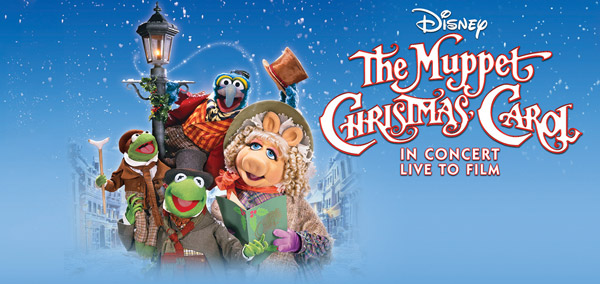
The Muppet Christmas Carol in Concert with New Jersey Symphony
Thursday, December 05, 2024 @ 7:30pm
Mayo Performing Arts Center (MPAC)
100 South Street, Morristown, NJ 07960
category: film
View event page for full information
An Evening with Chevy Chase & National Lampoon's Christmas Vacation
Thursday, December 05, 2024 @ 7:30pm
State Theatre New Jersey
15 Livingston Avenue, New Brunswick, NJ 08901
category: film
View event page for full information
The Muppet Christmas Carol in Concert
Friday, December 06, 2024 @ 7:30pm
Count Basie Center for the Arts
99 Monmouth Street, Red Bank, NJ 07701
category: film
View event page for full information
More events
Event Listings are available for $10 and included with our banner ad packages
UPCOMING EVENTS
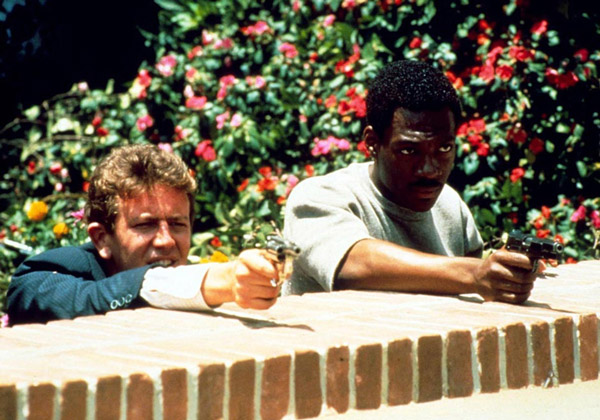
bergenPAC presents An Evening with Judge Reinhold and screening of "Beverly Hills Cop"
(ENGLEWOOD, NJ) Bergen Performing Arts Center (bergenPAC) presents An Evening with Judge Reinhold and screening of Beverly Hills Cop on Friday, January 17, 2025 at 7:00pm. Celebrating the 40th year anniversary of the Beverly Hills Cop franchise, here's your chance to hang out with Detective William "Billy" Rosewood, played by Judge Reinhold who co-starred in all four installments with Eddie Murphy including the latest 2024 Netflix release. ** Note: this show was rescheduled from September 27, 2024, previous purchased tickets will be honored at the new date. For inquiries, please contact the box office at 201-227-1030.
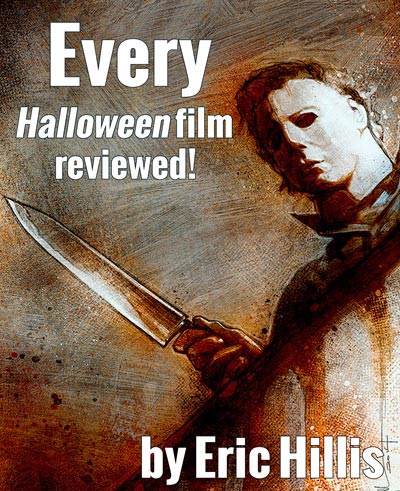 One of the classic horror film franchises is Halloween. Eric Hillis takes a look at each film from the classic debut in 1978 to the most recent installment in 2009. Along the way, you get a sense of how the story has evolved and how the quality has devolved at times. For a look at the original film trailers for each film read our original magazine story. It's a fascinating look at the Michael Myers story...
One of the classic horror film franchises is Halloween. Eric Hillis takes a look at each film from the classic debut in 1978 to the most recent installment in 2009. Along the way, you get a sense of how the story has evolved and how the quality has devolved at times. For a look at the original film trailers for each film read our original magazine story. It's a fascinating look at the Michael Myers story...



